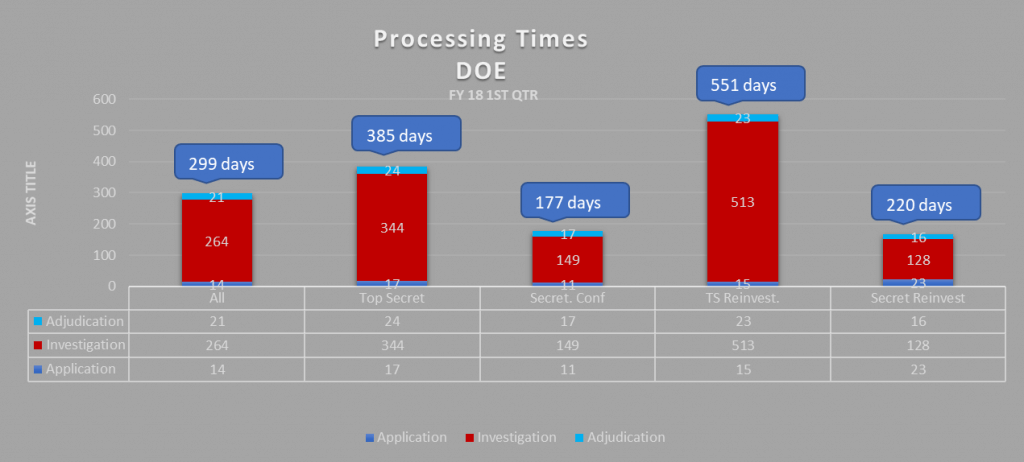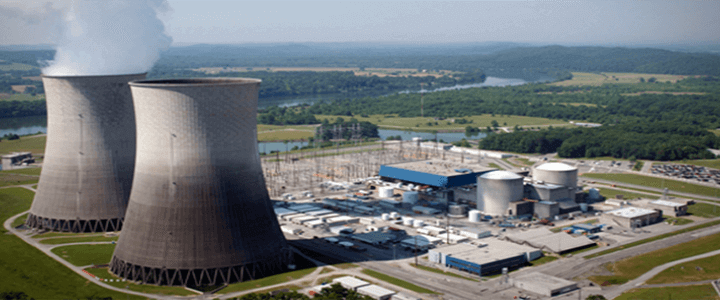The Department of Energy maintains its own personnel security program, with its own levels of clearance. A ‘Q’ clearance is the equivalent of a Top Secret security clearance, and an ‘L’ clearance is the equivalent of a Secret security clearance.
Despite managing its own program, like most government agencies, it outsources its investigations to the National Background Investigations Bureau (NBIB). That means that like the Department of Defense, it is facing ongoing security clearance processing delays.
Department of Energy Clearance Processing Times Q1 2018
| Application | Investigation | Adjudication | ||
| All | 14 | 264 | 21 | 299 |
| Top Secret | 17 | 344 | 24 | 385 |
| Secret. Conf | 11 | 149 | 17 | 177 |
| TS Reinvest. | 15 | 513 | 23 | 551 |
| Secret Reinvest | 23 | 128 | 16 | 220 |

These numbers represent only the contract population, and only the fastest 90 percent of investigations. That means there are outlying investigations that fall even beyond the scope of these processing times. And it reflects the difficulty DoE contractors have in hiring professionals in a timely manner.
NBIB has been working with the DoE to help expedite high priority cases. DoE has been involved in hubbing and surging efforts, increasing the number of investigators in a certain region for a certain time, in order to push through backlogged cases. Charles Phalen recently cited hubbing and surging as one successful effort used to work through the backlog, as investigators in the surge regions, including Los Alamos research laboratory, push through more cases in a shorter time frame.




